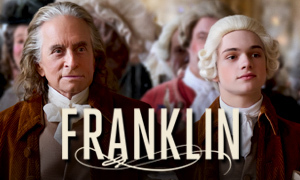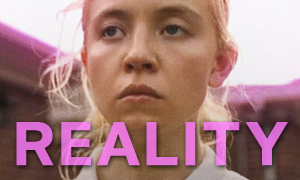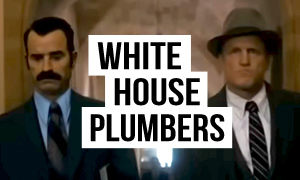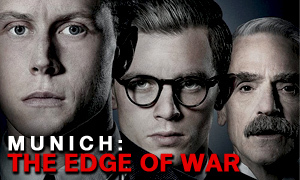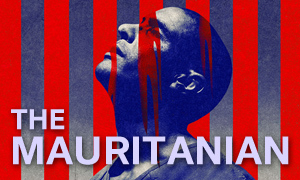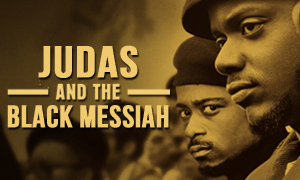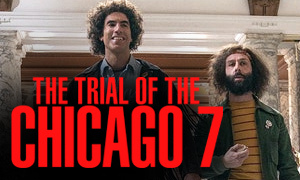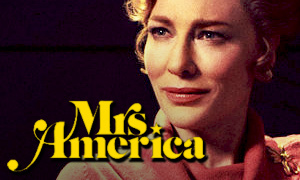The Trial of the Chicago 7: History vs. Hollywood
Eddie Redmayne
Born: January 6, 1982
Birthplace:
London, England, UK
Tom Hayden
Born: December 11, 1939
Birthplace: Royal Oak, Michigan, USA
Death: October 23, 2016, Santa Monica, California, USA
Sacha Baron Cohen
Born: October 13, 1971
Birthplace:
Hammersmith, London, England, UK
Abbie Hoffman
Born: November 30, 1936
Birthplace: Worcester, Massachusetts, USA
Death: April 12, 1989, Solebury Township, Pennsylvania, USA
Jeremy Strong
Born: December 25, 1978
Birthplace:
Boston, Massachusetts, USA
Jerry Rubin
Born: July 14, 1938
Birthplace: Cincinnati, Ohio, USA
Death: November 28, 1994, Westwood, Los Angeles, USA
Alex Sharp
Born: February 2, 1989
Birthplace:
Westminster, London, UK
Rennie Davis
Born: May 23, 1941
Birthplace: Lansing, Michigan, USA
John Carroll Lynch
Born: August 1, 1963
Birthplace:
Boulder, Colorado, USA
David Dellinger
Born: August 22, 1915
Birthplace: Wakefield, Massachusetts, USA
Death: May 25, 2004, Montpelier, Vermont, USA
Noah Robbins
Born: October 6, 1990
Birthplace:
Washington, D.C., USA
Lee Weiner
Born: September 7, 1939
Birthplace: Chicago, Illinois, USA
Danny Flaherty
Born: June 11, 1993
Birthplace:
Glen Rock, New Jersey, USA
John Froines
Born: May 31, 1939
Yahya Abdul-Mateen II
Born: July 15, 1986
Birthplace:
New Orleans, Louisiana, USA
Bobby Seale
Born: October 22, 1936
Birthplace: Liberty, Texas, USA
Mark Rylance
Born: January 18, 1960
Birthplace:
Ashford, Kent, England, UK
William Kunstler
Born: July 7, 1919
Birthplace: New York City, New York, USA
Death: September 4, 1995, New York City, New York, USA
Ben Shankman
Born: September 26, 1968
Birthplace:
New York City, New York, USA
Leonard Weinglass
Born: August 27, 1933
Birthplace: Belleville, New Jersey, USA
Death: March 23, 2011, The Bronx, New York City, USA
Joseph Gordon-Levitt
Born: February 17, 1981
Birthplace:
Los Angeles, California, USA
Richard Schultz
Born: abt 1938
J.C. MacKenzie
Born: October 17, 1970
Birthplace:
Peterborough, Ontario, Canada
Thomas Foran
Born: January 11, 1924
Birthplace: Chicago, Illinois, USA
Death: August 6, 2000, Lake Forest, Illinois, USA
Michael Keaton
Born: September 5, 1951
Birthplace:
Coraopolis, Pennsylvania, USA
Ramsey Clark
Born: December 18, 1927
Birthplace: Dallas, Texas, USA
Frank Langella
Born: January 1, 1938
Birthplace:
Bayonne, New Jersey, USA
Judge Julius Hoffman
Born: July 7, 1895
Birthplace: Chicago, Illinois, USA
Death: July 1, 1983, Chicago, Illinois, USA
What were the Chicago Seven on trial for?
Originally the Chicago Eight, the activists were on trial for crossing state lines with the intent to incite a riot at the 1968 Democratic National Convention in Chicago, Illinois, which took place from August 26–29. The were allegedly in violation of the Civil Rights Act of 1968. The Trial of the Chicago 7 true story reveals that they had gone to Chicago mainly to protest American involvement in the Vietnam War and the fact that the Democratic presidential nominee, Hubert Humphrey, did not staunchly oppose the war. Other charges against the eight defendants included committing acts to impede law enforcement officers and instructing others on how to make incendiary devices.
The Chicago Eight included Abbie Hoffman, Tom Hayden, David Dellinger, Jerry Rubin, Lee Weiner, Rennie Davis, John Froines and Bobby Seale. However, the last man, Seale, was eventually removed from the proceedings, which dropped the total number of defendants to seven. 16 co-conspirators were also named but never prosecuted.
How long did the Chicago Seven trial last?
The majority of the lengthy trial is not shown in the movie, largely due to the time constraints of a 2-hour film. The trial lasted nearly five months, from September 1969 to February 1970. Their sentencing, which was later reversed on appeal, took place on February 20, 1970.
Did the protesters who came to Chicago break the law?
Technically, yes. The protesters, mainly made up of the Youth International Party (Yippies) and the National Mobilization Committee to End the War in Vietnam (Mobe), were only given a permit to assemble at the bandshell at Grant Park. They were denied permits to march toward the site of the Democratic National Convention, as well as hold rallies in various lakefront parks and close to the convention site. To this end, Mayor Richard Daley was largely trying to keep them out of sight and out of mind. His public response was that he was trying to ensure the safety of the convention attendees. Over the span of five days and nights, several thousand protesters defied the restrictions. They tried to march to the International Amphitheater where the convention was being held, among other locations, including police headquarters.
The protesters also defied the park's 11:00 pm curfew. Initially, police confronted the protesters in an effort to enforce the curfew and clear the park. One problem was that there were thousands of protesters and many didn't have money for a hotel, which were mostly booked due to the convention. Clearing the park meant forcing people into the streets, many with no place to go.
Did the protesters "take the hill" and charge the police?
No. The movie makes it seem like a swarm of police were surrounding the statue of General John Logan at the top of the hill before the demonstrators charged. However, it actually happened the other way around. The police were not on the scene when the demonstrators charged the hill in Grant Park and began climbing up onto the statue and waving flags. It was only then that the police arrived to clear the protesters from the statue and the hill. This is depicted in the Chicago 10 documentary.
Was Jerry Rubin arrested after trying to prevent an attempted rape?
No. In the movie, several fraternity brothers become angry that a female protester is waving an American flag. They approach her and attempt to sexually assault her. This prompts Jerry Rubin to step in and escort her out of the park, at which point a police officer puts a gun to his head and arrests him. This isn't how Rubin's real arrest went down, and there's no mention of him saving a woman who was being attacked.
The Trial of the Chicago 7 real story reveals that Rubin was arrested later when he was picked by police on a Chicago street and put into an unmarked car.
Was Jerry Rubin seduced by a female undercover agent?
No. The female undercover agent in The Trial of the Chicago 7 movie, Agent Daphne Fitzgerald (Caitlin Fitzgerald), is an almost entirely fictional character. The real Jerry Rubin was never seduced by a female undercover agent. Daphne seems to have been introduced in the movie to bring levity to the story after Jerry Ruben (Jeremy Strong) discovers the truth about her. In real life, there were three undercover agents who infiltrated the demonstrators. An agent by the name of Robert Pierson became a bodyguard for Jerry Rubin. He posed as a member of a motorcycle gang.
Did the protesters, including Abbie Hoffman and Jerry Rubin, march on police headquarters to get Tom Hayden out of jail?
Yes. The true story behind The Trial of the Chicago 7 confirms that the standoff indeed happened in real life. The protesters were met by an armed battalion of police officers outside the station. Like in the film, activist Tom Hayden was released on bail.
Who was to blame for the violence, the protesters or the police?
In reality, they were both at fault to varying degrees. The movie almost entirely depicts the police as the aggressors and the protesters the victims. As a result, we're shown a mostly one-sided account of what actually happened. Like in the film, the August 28, 1968 clash was dubbed by a commission as a "police riot." During the violent confrontations, there were indeed press and eyewitness accounts of police overreacting and indiscriminately attacking nearly everyone in sight, including reporters, as some officers seemed to enter into a state of panic. It didn't help that many of the officers had little training in riot control. In an attempt to control the defiant and at times aggressive crowds, police used verbal and physical means, including tear gas, mace, and hitting unruly protesters with batons. Footage of bloodied protesters was featured prominently in the media.
While the movie doesn't seem to show a single injured police officer, the reality is that the violence was coming from both sides. Approximately 192 police officers were injured. Over the years, the media and Hollywood have increasingly put the focus on the demonstrators and have almost entirely subdued the police officers' side of the story. This is evident by watching Chicago 7 documentaries and movies over the past three decades, which go from presenting both sides to barely acknowledging the violence directed at the police.
The movie shows demonstrators throwing a few bottles that break near the feet of the police. In reality, individuals who were part of the 10,000+ demonstrators threw bottles, bricks, rocks, bags of urine and feces, and numerous other objects, including spiked golf balls (a golf ball with nails sticking out of it). Officers who were there described the scene as "chaos." They also tell of glass ashtrays that were dropped on them from hotel windows high above. Bricks were thrown at police cars and the windows of patrol cars were smashed. Nail-spiked rubber balls were left under their car tires. Though we don't really see it in the movie, the demonstrators punched and physically fought with the police as well. They also inflicted damage to private businesses. -The San Diego Union-Tribune
Even in calmer moments, demonstrators repeatedly called them "pigs" and some got in officers' faces and tried to provoke officers to shoot them. They touched and pushed officers. The violence on both sides is also discussed in our episode The Trial of the Chicago 7: History vs. Hollywood.
Was Bobby Seale tried with the others because the prosecutors thought a black man would scare the jury?
Not likely. We found no evidence that Bobby Seale was picked in order to incite a racist reaction from the jury. Unlike the other defendants, it's true that he had not been involved in the planning of the protests and had only been in Chicago for two days of the convention as a short-notice replacement for Eldridge Cleaver. In researching The Trial of the Chicago 7 true story, we discovered that Seale, the Black Panther Party Chairman, was charged with inciting a riot because of a speech he gave in Lincoln Park during which he called for violence against police.
Bobby Seale told the crowd of 2,000 angry protesters, "If a pig comes up to us and starts swingin' a billy club and you check around and see you got your piece, you gotta down that pig in defense of yourself. ... Because if you pull it out and shoot it well, all I'm gonna do is pat you on the back and say, 'Keep shooting.'" The fact that Seale was the chairman of the Black Panther Party may have also been another likely reason that the government went after him.
Did Black Panther Co-Founder Fred Hampton give advice to Bobby Seale during the trial?
No. There's no record of Fred Hampton being there and giving advice to Bobby Seale. While some Black Panthers were probably at the trial, the movie introduces Hampton in order to later tie in his death at the hands of the police. In the film, Hampton's death provides the motivation for Seale to become more defiant at the trial.
Did Judge Hoffman have Bobby Seale bound and gagged in the courtroom?
Yes. Defendant Bobby Seale, the National Chairman of the Black Panther Party, was upset that the trial could not be delayed so that his attorney, Charles Garry, could represent him (Garry was recovering from gallbladder surgery). Judge Julius Hoffman told seal that he was already being represented by attorney William Kunstler (Mark Rylance in the movie), who had represented Seale at the pre-trial hearings. However, Seale claimed that he fired Kunstler and didn't want a white lawyer.
When Judge Hoffman denied the postponement and told Seale he could not represent himself, Seale vehemently protested via a number of outbursts and constantly disrupted the trial. He called the judge a "bigot," a "racist," a "fascist" and a "pig." One month into the trial, the judge ordered the bailiffs to do something to stop the disruptions. They chained Seale to a chair, as well as bound and gagged him. To justify the action, Judge Hoffman referred to a precedent from the U.S. Supreme Court case Illinois v. Allen., which ruled that a defendant has the absolute right to be present at his own trial, even if it means binding and gagging the defendant to make the trial possible. -FindLaw.com
While the movie only shows Seale bound and gagged for a short time, he actually appeared in court that way for three days, making muffled sounds and trying to get free, which prompted defense attorney William Kunstler to refer to the courtroom as a "medieval torture chamber." Many called Judge Hoffman's actions abuse, while there were others who wondered what else he could have done to contain Seale's outbursts. Observers argued that Judge Hoffman should have severed Seale from the trial instead of taking such extreme action.
Judge Hoffman eventually allowed Seale into the courtroom without his restraints, at which time Seale once again disrupted the proceedings. In Seale's case, Judge Hoffman was forced to declare a mistrial, calling Seale's actions "a deliberate and wilful attack upon the administration of justice in an attempt to sabotage the functioning of the federal judiciary system." Hoffman found Seale guilty of 16 acts of contempt of court, resulting in a sentence of four years in prison. He had to be carried out of the courtroom. Onlookers declared, "Free Bobby!" Seale was severed from the case.
With Seale no longer part of the trial, the Chicago Eight became known as the Chicago Seven. As a result of the judge's unconstitutional actions in denying Seale his chosen attorney, in addition to the ability to represent himself, the contempt charges against Seale were eventually overturned by the U.S. Court of Appeals. While it was intended that he would be tried separately, the trial never happened.
Was the prosecutor Richard Schultz, portrayed by Joseph Gordon-Levitt, sympathetic to the defendants?
Not at all. The Trial of the Chicago 7 fact-check revealed that the real Richard Schultz, who was a junior prosecutor on the case, did not have doubts about what he was doing. In fact, he was reportedly the government's bulldog who wouldn't hesitate to launch into attacks against the defendants and their attorneys. This means that the very opening scene of the film is heavily fictionalized, among others. -The Guardian
Did Judge Hoffman make the defendants and their attorneys cut their long hair?
While it's not shown in the film, this was another one of the judge's actions that served to exacerbate the fiasco unfolding in his courtroom. He ordered that the barbers at the Cook County Jail cut the lengthy locks of the defendants and their lawyers. It's not surprising that the film omits this, given that it might be harder to keep track of the characters.
Did Tom Hayden tell the crowd, "If blood is gonna flow, let it flow all over the city"?
According to real-life accounts, this happened on Wednesday, August 28, 1968, the day the Convention week violence was at its peak. Tom Hayden reportedly told the audience of 10,000 to 15,000 who had gathered at the bandshell at Grant Park, "This city and the military machine it had aimed at us won't permit us to protest. ... Therefore, we must move out of this park in groups throughout the city and turn this excited, overheated military machine against itself. Let us make sure that if blood is going to flow, let it flow all over this city. If gas is going to be used, let that gas come down all over Chicago. ... If we are going to be disrupted and violated, let this whole stinking city be disrupted and violated." The movie implies that Hayden was referring only to the protesters' blood flowing in the streets and forgot to use the pronoun "our" when referring to the blood. However, the real Hayden wasn't as nonviolent as the movie makes him out to be. He had made other incendiary comments in the build-up to the convention.
We then see a small group of protesters, including Jerry Rubin (Jeremy Strong) and Abbie Hoffman (Sacha Baron Cohen), make their way across an unguarded bridge toward the convention. In real life, a much larger group of protesters crossed the bridge and confronted the police, which ignited what became known as the "police riot."
In the film, Abbie Hoffman attempts to clarify in court what Tom Hayden meant to say. However, we found no record that the "If blood is going to flow" quote was ever uttered in court, nor did Hoffman ever quote from the Book of Matthew. We also found no evidence that a tape of Hayden saying this actually existed in real life or was introduced in court.
The incident around the flagpole seems to have been fictionalized somewhat in the film. In real life, the flagpole incident happened around 3 p.m. Demonstrators had tried to replace an American flag in the park and raise a red or blood-splattered shirt in its place. As police officers moved in to retrieve the American flag, Jerry Rubin shouted, "Kill the pigs! Kill the cops!" At some point, Rennie Davis was indeed clubbed unconscious, but this appears to have happened after some of the demonstrators formed a line between the police and the crowd. Officers then charged the line to get to the flagpole. It's true that Rennie Davis getting clubbed is what led Hayden to make his remarks.
Were activists Abbie Hoffman and Tom Hayden really at odds with each other during the trial?
While Sacha Baron Cohen and Eddie Redmayne's characters are at odds with one another in the movie, the real-life Hoffman and Hayden weren't as different as the film portrays them to be. It's true that Tom Hayden was more restrained and civil than Abbie Hoffman, but like Hoffman, Hayden had a tendency to say explosive things at times. He also wasn't as clean-cut as Eddie Redmayne's character.
Did two of the Chicago Seven wear judicial robes into the courtroom?
Yes. Judge Julius Hoffman was a stickler for order and etiquette in his courtroom. The Chicago Seven went out of their way to agitate him. They challenged Judge Hoffman and disrupted the trial on a daily basis. They did such things as read poetry in the courtroom and chant Hare Krishna. Exploring The Trial of the Chicago 7's historical accuracy confirms that Abbie Hoffman and Jerry Rubin once wore judicial robes into the courtroom, at which point they threw them to the floor and stepped on them, only to reveal that they were wearing police uniforms underneath. Aside from Bobby Seale, who ended up not being tried with the others, Abbie Hoffman was the most problematic. He continually referred to the judge as "Julie" and told him he "would have served Hitler better." Later, he told Judge Hoffman, "Your idea of justice is the only obscenity in the room." Both Jerry Rubin and Rennie Davis told Judge Hoffman "this court is bullsh*t."
Did Dave Dellinger punch out a bailiff?
No. As stated in the movie, Dave Dellinger was a Boy Scout Leader and a pacifist. Unlike what's seen in the film, he didn't betray his penchant for nonviolence by punching a bailiff. In fact, the beginning of this scene with Michael Keaton's character, former U.S. Attorney General Ramsey Clark, appears to be mostly fictional as well. The court transcripts reveal that while Clark did appear in a voir dire proceeding (an examination without the jury to assess a witness's qualification to give testimony), Clark never discussed a call with President Lyndon Johnson. He only answered questions about his discussions with city officials and federal planning in preparation for the convention. His bombshell testimony alluded to in the movie that could contradict the entire proceedings and prove that the case was largely a witch hunt is a fabrication.
While it's true that Judge Hoffman did not allow Ramsey Clark to participate in the trial, the decision never led Dave Dellinger, a pacifist, to punch out a bailiff. Dellinger never punched anybody during the trial.
Did Tom Hayden read the names of fallen Vietnam soldiers in court?
No. In the movie's climactic moment at the end of the trial, Tom Hayden (Eddie Redmayne) stands and defies the judge's instruction and begins reading the 4,752 names of soldiers killed in Vietnam. It's a defining moment in the film, but according to court transcripts, Hayden didn't do this in real life. In reality, it was fellow defendant Dave Dellinger who read the names. It happened earlier in the trial on Moratorium Day, October 15, 1969, a day when nationwide demonstrations called for a moratorium to end the war in Vietnam. Dellinger stood and began reading the names before Judge Hoffman arrived in the courtroom. When the judge walked in he made Dellinger stop, and their back and forth remarks resulted in Dellinger getting a contempt charge.
Were the Chicago Seven punished?
The jury found all seven defendants not guilty of conspiracy. Five of the seven men (Tom Hayden, Abbie Hoffman, Rennie Davis, David Dellinger, Jerry Rubin) were convicted and sentenced to five years in prison for inciting riots. All seven men, as well as their lawyers, were given hefty contempt of court sentences by Judge Julius Hoffman. He had issued a total of 175 contempt of court citations during the trial. However, aside from their attorney, William Kunstler, none of the men spent more than 3 years in prison. The Seventh Circuit Court of Appeals reversed the convictions in 1972, citing that Judge Hoffman exhibited bias when he wouldn't let defense attorneys screen potential jurors for racial and cultural prejudices. The appeals court also cited the FBI's surveillance of the defense lawyers' offices as a violation of their rights.
As for the eighth man, Bobby Seale, who had been severed from the case, Judge Hoffman had sentenced him to four years for contempt. After two years, his sentence was overturned and the charges against him were dropped. In the years that followed, Seale was implicated in two murders, one of a fellow Black Panther who had an affair with his wife. He was never convicted.
Were any police officers punished?
In researching the fact vs. fiction in the movie, we discovered that eight police officers were indicted by a federal grand jury. They were then charged with violating the civil rights of the demonstrators due to their use of excessive force.
Did Americans take the side of the Chicago Seven or the police?
80% of Americans at the time disapproved of the demonstrators tactics and blamed the demonstrators over the police.
Overall, how accurate is The Trial of the Chicago 7?
What unfolds at the trial in the movie was largely taken verbatim from the original courtroom transcripts. The film also intercuts actual black and white news footage with its dramatized protests. However, there is still plenty of embellishment since cameras had not been allowed in the courtroom, in addition to the fact that much of the trial is not shown in the film. Director and screenwriter Aaron Sorkin is clearly sympathetic to the protesters, portraying them as the victims and the police as the aggressors. However, the actual events that led to the Chicago Seven Trial weren't so black and white. Violence ensued from both sides, instigated in part by the police.
During the trial, the defendants continually disrupted the courtroom and made a mockery of the court and the law. At the same time, the judge exhibited bias rather than remaining impartial. As a result, all of the convictions were eventually reversed. Joseph Gordon-Levitt's character alludes to the obvious question, that as activists, was being arrested and charged really an unwanted occurrence? Their trial gave them a national stage and their attention-getting antics helped turn the Chicago Seven into celebrities for their causes. Their voices were never heard more loudly. The movie chants its 1960s protest mantra, "The whole world is watching!" In the film, one of the seven even refers to the trial as being the "Academy Awards of protests," stating that it's an honor just to be nominated.
After the trial ended, several of the men went on to write books about their experience. Abbie Hoffman embraced his newfound status and remained a well-known activist until his death. Tom Hayden embarked on a career in politics and married celebrity Jane Fonda. In addition to the Aaron Sorkin film, other movies and documentaries have been made about the men, including the 2007 Sundance favorite Chicago 10.
Despite spending time in prison, it's true that their sentences were eventually overturned. Ironically, for eight men who claimed that the system was corrupt and unfair, the courts worked in their favor in the end, a point that the film mostly ignores.
Chicago Seven Documentaries & Related Videos
Expand your knowledge of The Trial of the Chicago 7 true story by watching the documentary and related videos featured below.
